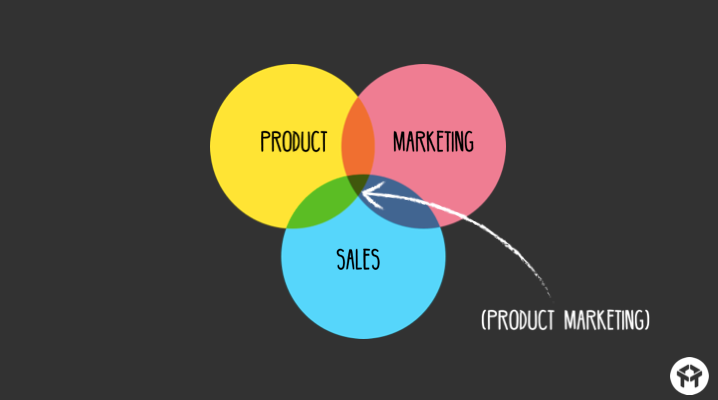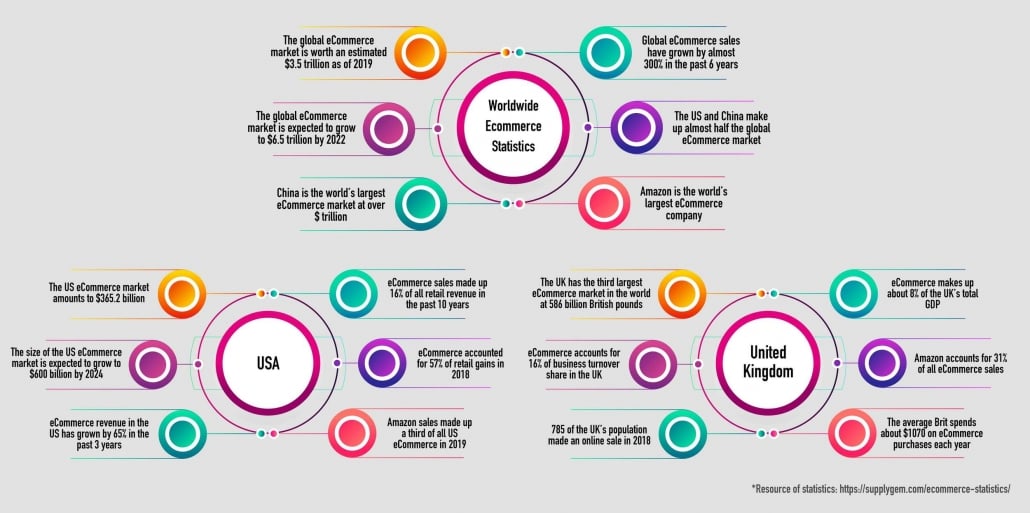Online Retailing:
7 Widespread Myths about eCommerce Business Debunked
Ecommerce is a powerful sales-driving force today. By the year 2022, worldwide online retailing is estimated to reach $6.5 trillion in sales per year. Moreover, according to Nasdaq, by 2040, it is forecast to constitute 95% of all purchases that people make. Thus, the future looks promising for the stores that are just going to retail online.
However, for newbies in the subject, there is a strong necessity to know all the pitfalls, as well as myths eСommerce, has acquired over the last ten years. Without further ado, let’s find out 7 myths of ecommerce business that every beginner retailer or marketer should know about.
#1. A Website is Enough for eCommerce Retailing

The biggest misconception about e-commerce is that creating an online store, getting products in front of visitors, incorporating shopping carts and payment options are enough for successful online retailing. Actually, the website is just a tool that comes together with others to make the business prosperous in a highly competitive environment.
That way, marketers and retailers should think about market research, probable risks, customer wants and needs, and effective marketing and promotional strategies. They also need to be aware of the latest eComm features and options such as visual marketing for eCommerce and integrate them into the online store for the best customer experience.
As for a supply chain as an integral part of sales, most online retailers go dropshipping nowadays. It is the model of selling the goods in a way when they are purchased from a third party but delivered by the wholesaler. Thus, there’s no need for an online store to stock the goods. In a nutshell, there are many aspects to factor in before even turning to online retailing.
#2. Web Traffic Gains Automatically

Another critical myth to debunk, especially among start-ups, is that a perfectly designed website, high-quality products and exclusive offers are what attract the prospects. However, such a mindset is self-defeating. There are millions of competitors out there fighting for every single prospect coming to their online channel.
That way, marketers and retailers need to learn ways of acquiring web traffic. It requires efficient marketing strategies and online retailing approaches to stand out on the Internet amongst competitors. So, these are search engine optimization (SEO), search engine marketing (SEM), social media marketing (SMM), and pay-per-click (PPC) advertising. At present, PR marketing and link building as a part of it also bring brand awareness to the table. When working together, these strategies make an important contribution to augmenting a whole targeted traffic volume.
#3. Online Retailing Imposes Limits on Product Information

The next misconception is that eCommerce curbs the ability to provide enough of information and visual content for the goods. As a result, retailers give too little or too much information. Both ways make customers confused and they leave the marketplace.
This is where effective copywriting comes in handy. The product description should be comprehensive, readable, and simple. Spiced up with marketing tactics, copywriters present the items in the best possible way making them attractive to potential buyers.
As for the visuals, infographics with comparisons, photos, 3D renders, animations and so on also affect the buying decision process. Thus, 36% of prospects used visual search and 59% say that visuals are more important than text content when shopping online, according to the 2018 research from Intent Lab. So, the diversity of product presentation also defines the success of online retailing nowadays, and eCommerce only greenlights that.
#4. Photos are the Only Go-To Way to Present the Products Effectively

For the last decade, the owners of online stores have used physically staged photos as ways to present the products. But today it’s not what makes businesses shine on the Internet. To pack a punch amongst competitors, a lot of online retailers turn to AI and VR technologies that create an unmatched customer experience for shoppers.
For example, furniture retailers use product 3D renders to present the items. What’s interesting, this product CGI for e-commerce furniture businesses is as realistic as real-life photos and fully conveys the usability and functionality of the product. Retailers turn to such technology because it is flat-out more affordable and faster than taking pictures in the studio. To illustrate, it takes time and money to organize the photo shoot, have furniture delivered and staged into a beautiful “photo-worthy” design, and then shot by a professional photographer. Otherwise, a photorealistic CG image costs about $40 and a set of them can be created within 1-2 days.
Some giant retailers like Ikea and Overstock.com also use online try-on opportunities thanks to AR. So, a customer can select a sofa, for example, and by using the phone’s camera project it to the place where they want it to be installed in their real-life room. They can move, drop, and zoom it. This way, potential buyers can assess if the object fits in the room’s interior design.
#5. Low Prices are What Attracts Customers the Most

A lot of online retailers think that eCommerce retail sales depend significantly on low pricing. Being price competitive has been always a struggle for many businesses. To pay less and get more is a common characteristic of every human being. But it’s not a determining factor that influences the purchasing decision. Moreover, people are willing to pay more if they find what they want. So, the other aspects that define the shoppers’ decisions are brand popularity, customer reviews, shopping experience, responsive and helpful customer support, etc.
For instance, on Amazon, the overall rating of the product depends on the positive-negative feedback ratio. That’s why many online retailers create a reputation management department to address negative reviews and communicate with disappointed customers.
Besides, being “cheap’ signals that the item is of poor quality or the stock is dead. So, in order to succeed in online retailing, marketers should consider other aspects, besides an affordable price, to pique the customers’ interest. These are promo codes, giveaways, free shipping, free returns, A-class service, and so on.
#6. English is Enough for Interacting on a Website

Today, for online retail stores, running their sites only in English is a huge mistake. Thus, according to Common Sense Advisory, a research company that studies global business and commerce, when people can’t read, they spend less time on English-language websites. Moreover, they make purchases at a way lower rate.
Adapting the site to a local language is called ‘localization’. A report made by Comtec Translations also shows that over 50% of all Google searches are now made in another language. It means that a business without localized content is missing out on great opportunities to reach out to more potential buyers. Besides, since customer reviews and post-sales support influence the sales directly, website localization becomes a no-brainer for online retailing representatives.
#7. Sales Completely Define a Profit

When a retailer first launches an online platform, first orders seem like the top of the world. However successful online retailing is about profitability. So, it also does matter how big the orders are. Other things that impact profitability are the expenses on product acquisition, shipping as well as return rate and other overheads.
As an example, the costs of selling a $10 or $40 order are usually similar. A retailer advertises once, packages and delivers once, supports one customer, and so on. Since an extra item added to the order gains an additional margin, it is better to raise an average order value than to focus on separate orders. In the long run, AOV is one of the significant factors that define business success.

Online retailing is a very complex process. Before going online, offline retailers and marketers should think of multiple online channels to be presented on, well-thought-out marketing strategies, appropriate localization, and a competitive product presentation. The latter is impossible without keeping up with the latest technologies, such as product 3D visualization and VR/AR. They not just only expand the customer experience, but make it unique on a particular selling platform. That’s what makes shoppers come back to it again and again.
Selling online and willing to get top-notch 3D visuals for your products to stand out on the market? Use our 3D modeling and rendering services to get win-win materials for your content marketing.
Leave a Reply
Want to join the discussion?Feel free to contribute!



low price attracts most of the customers easily. that’s why when start e-commerce site start with some campaign that helps to grow the site easily.